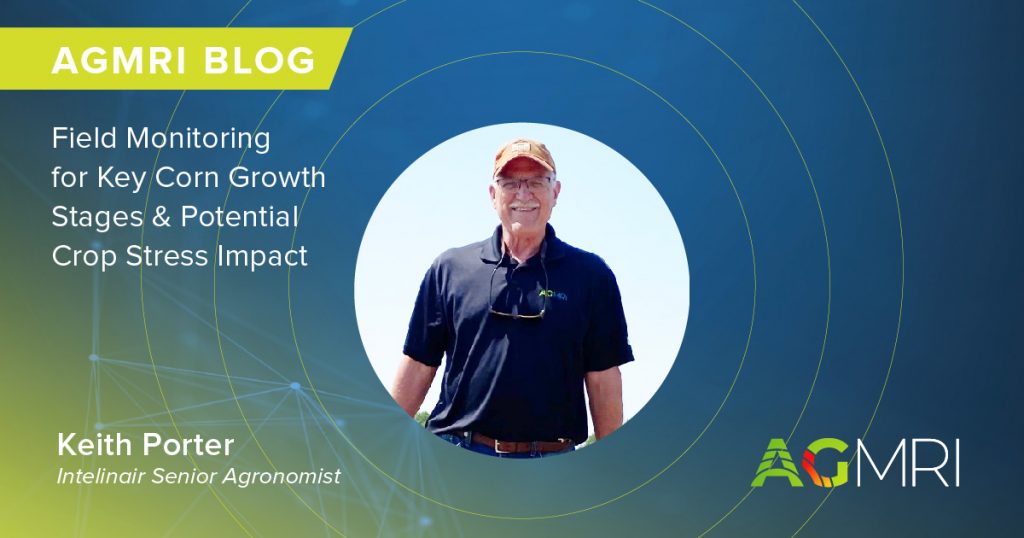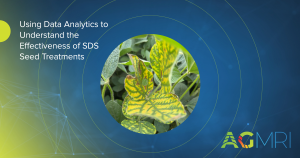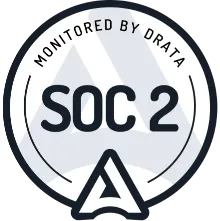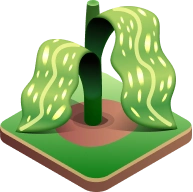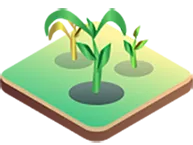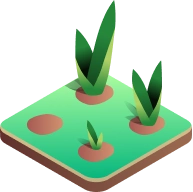Some of the prior week’s weather conditions in some locations – above average temperatures and below average precipitation – along with the rainfall of this past weekend, continue to raise questions about the condition of the corn crop at this point of the season. A key factor to understanding the potential impact of any stresses is considering the timing of the stress relative to the stage of crop development.
Intelinair Senior Agronomist Keith Porter shares the following summary of key growth stages and any potential impact to the crop from stresses at this time.
- While corn is less susceptible to heat and moisture stress during vegetative growth stages than during reproductive crop stages, severe early-season stress conditions can reduce yield potential.
- Key growth stages of a corn crop which can impact yield potential:
- V3 – V6 – The nodal root system begins development, becoming the primary source of utilizing soil resources by V6
- By V6 – All aboveground parts of the corn plant have been initiated – this includes all leaves, ear shoots, and the tassel
- V5 – V7 – The number of kernel rows around on the ear is established
- V7 – V11 – The maximum number of potential kernels on the ear is established
- Plant development during this time frame establishes the size of the overall plant and the size of each leaf. This impacts the total leaf area and photosynthetic capacity of the plant.
- Use AGMRI to continue to monitor crops for any potential impacts, and review crop plans to be certain to take advantage of opportunities to maintain yield potential, and note the differences in response to any crop stresses by hybrid to aid in product selections for coming seasons.

